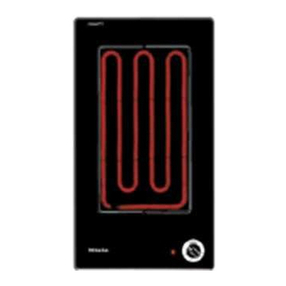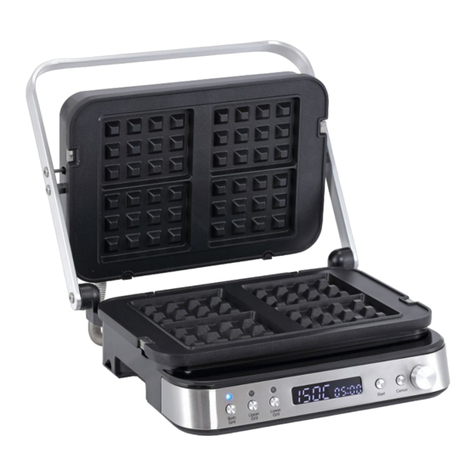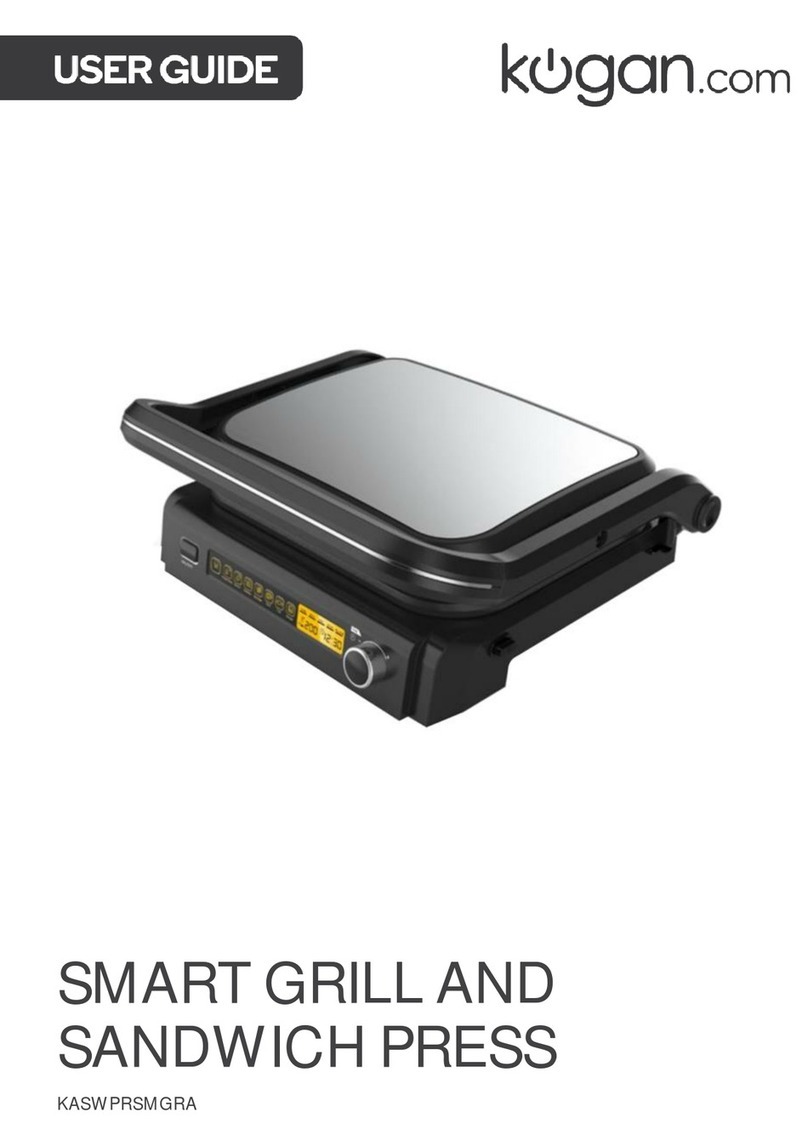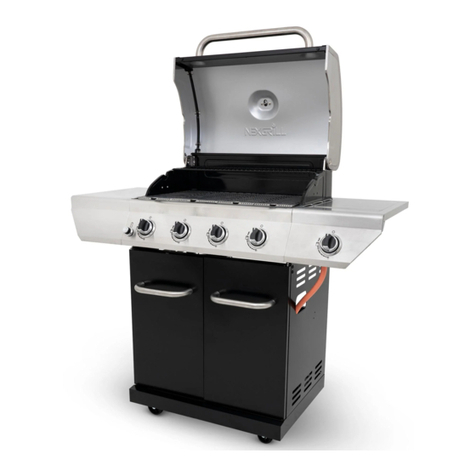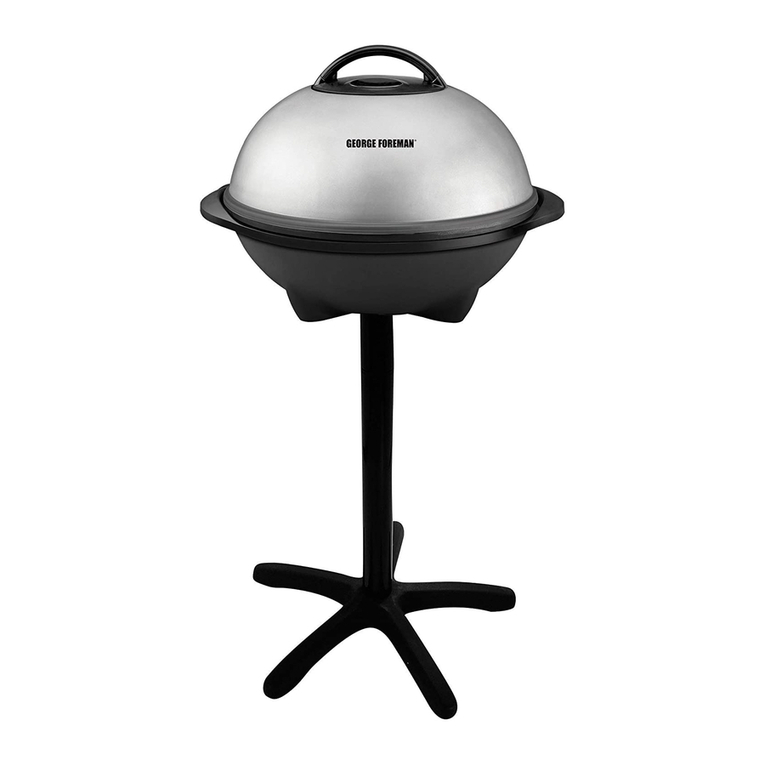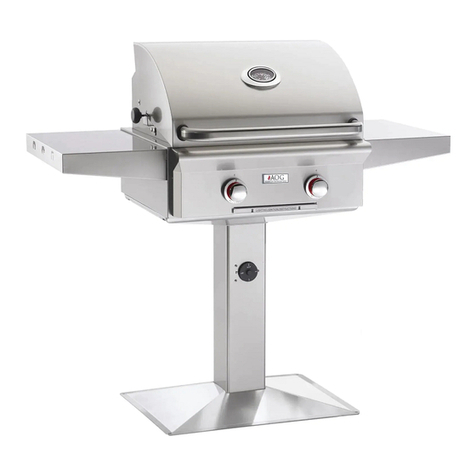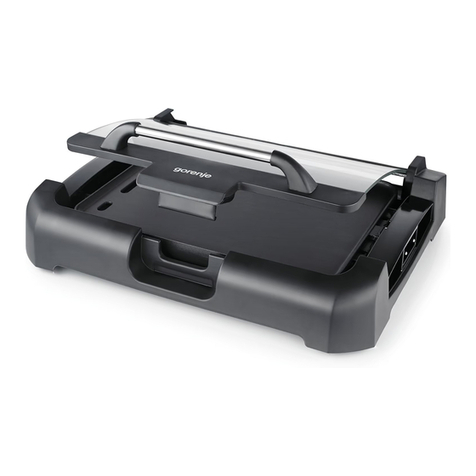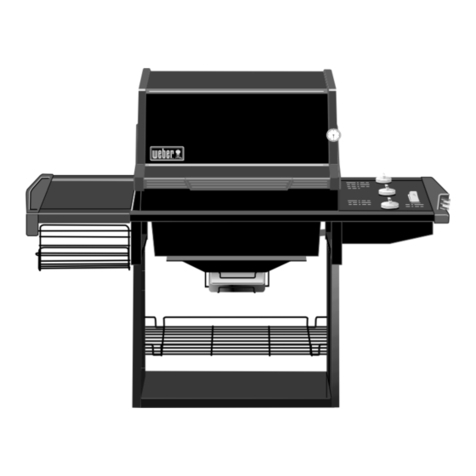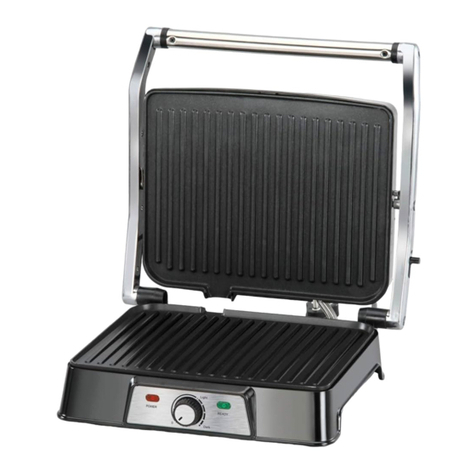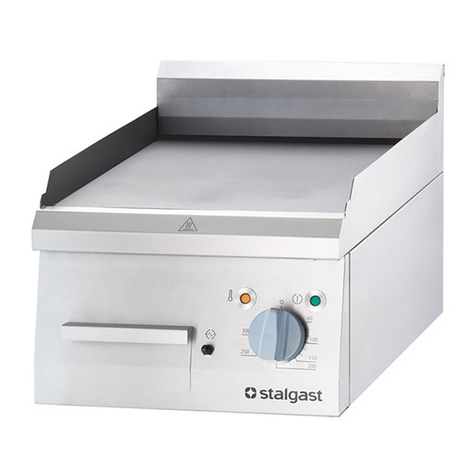
Safety measures prior to using the barbecue:
When setting up the barbecue, ensure that:
• There are not and will not be any flammable materials or substances nearby.
Minimum distance to flammable materials or substances: 2m above and 1m to the
side. Distance to highly flammable materials or substances, e.g. walls: minimum
0.25m
• The barbecue is positioned firmly on a sufficiently large surface area. It must not be
moved during operation
Safety measures while barbecuing:
• Wear protective barbecue gloves.
• Never leave the barbecue unattended. Take particular care to ensure that children
and pets are kept away from the barbecue.
Danger “Gas is highly flammable”
Liquid gas is highly flammable and explosive.
Possible consequences:
• Serious personal injury or damage to property if escaping gas ignites in an
environment in which it is not controlled.
Safety measures:
• Only use the barbecue outdoors and ensure that the area is well-ventilated.
- Using the grill in enclosed areas could lead to gas accumulation from a leak
causing an explosion or a carbon monoxide build-up which could result in
injury or death
- Do not use in garages, sheds or other enclosed areas
• Protect the gas cylinder and the gas hose from direct sunlight and other sources of
heat. Take particular care to ensure that the gas hose does not touch any part of
the hot barbecue.
• Do not operate after the grill malfunctions or has been dropped or damaged in any
way. Cease use and contact help.Kogan.com for support.
• Do not place the gas cylinder on the lower shelf, as it is too near the burner.
• Do not lean over the barbecue when igniting the gas flame.
• Close the valve on the gas cylinder immediately after each use (turn the valve
clockwise).
• Never leave the barbecue unattended. If the flame extinguishes, relight
immediately or cut off the supply from the gas cylinder.
• When connecting the gas cylinder, make sure that there are no sources of ignition
within a 5m radius. Take special care not to light any naked flames, do not smoke
or switch on electric appliances (devices, lights, doorbells), etc. (sparkover possible).





